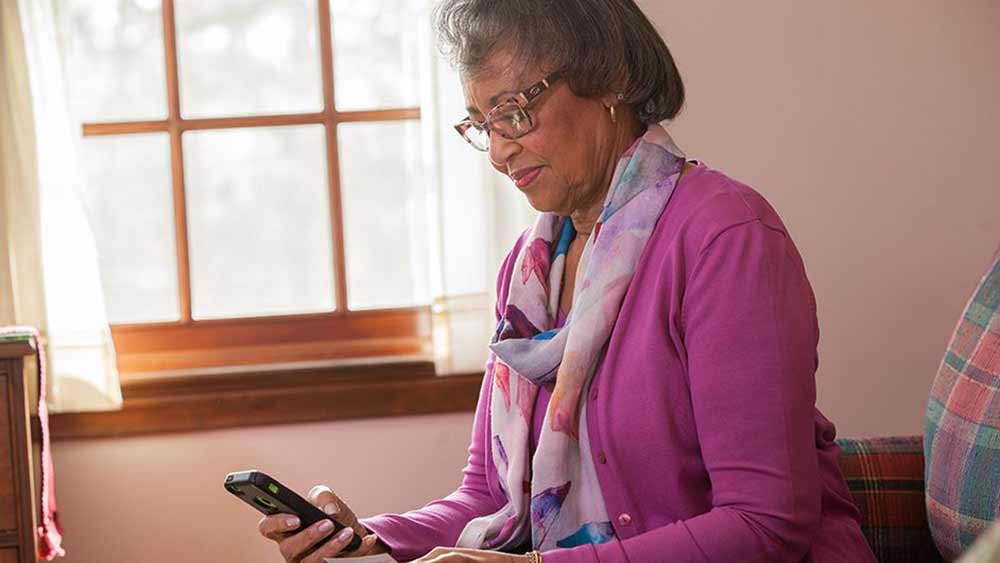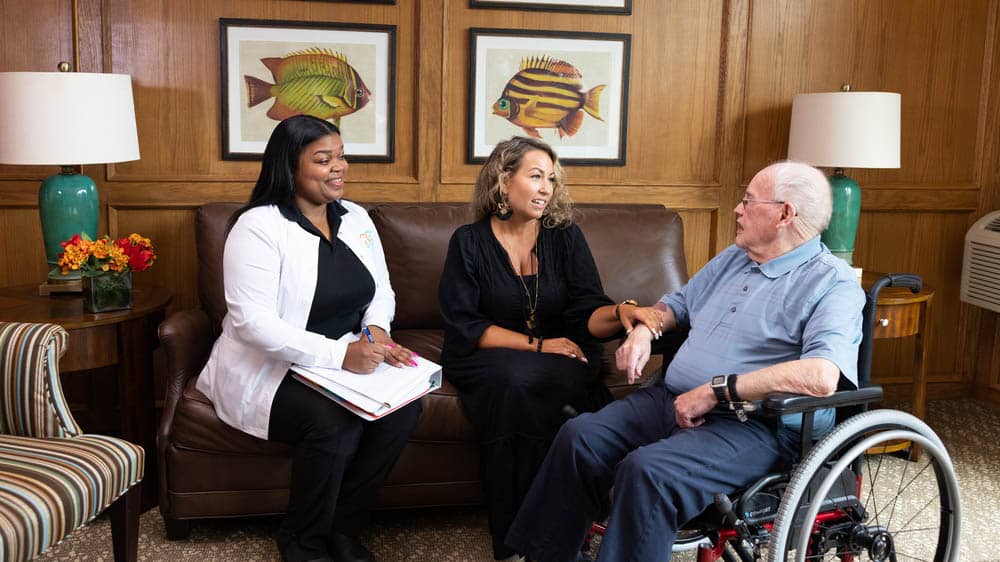

Avoid Loneliness During Social Distancing
How to Stay Connected During Social Distancing
At the recommendations of medical experts, and in many places by government mandate, we are practicing social distancing to help halt the spread of the coronavirus disease 2019 (COVID-19). Every day, we are seeing our opportunities to interact with others dwindle. Humans are wired for close contact, and studies have shown that maintaining connections, whether with acquaintances or immediate family members, combats stress and anxiety, and may lower health risks such as heart attack and hypertension.
Perhaps more than other generations, older adults need to maintain social ties. According to the Association of Health Care Journalists, older adults who experience social isolation and loneliness are more likely to develop dementia, have an increased risk of falls and hospital readmissions, and have increased mortality.
In the midst of the COVID-19 pandemic, many hospitals and long-term care and nursing facilities across the country are putting a pause on in-person visits to protect the vulnerable community, which includes older adults and individuals with chronic health conditions. Seniors who are residing in these facilities, as well as those who live on their own, may feel especially isolated during this break from their families and friends.
Ideas for Staying Connected
We have seen people taking creative measures to engage with their loved ones. This granddaughter shared her engagement news with her grandfather through the window of his senior living facility. We have more ideas on how you can stay socially connected without taking unnecessary risks:
- Set up regular phone calls. Schedule regular calls at the same time and on the same days. These recurring conversations give everyone something to look forward to.
- Discover the lost art of letter writing. Everyone loves getting a letter in the mail. Share your favorite stories and memories. If you’re writing to a younger family member, consider including a self-addressed stamped envelope to encourage them to write back.
- Set up easy-to-use technology. A tablet, smartphone or home device (e.g., Google Show) will allow your family to use apps like FaceTime, Facebook Messenger and Alexa to easily video conference with seniors.
- Watch a show together — virtually. Netflix Party is a new feature that allows friends and families to watch movies and TV shows together. If you have a Chrome browser on a desktop or laptop computer, you can join watch parties through an invitation URL. “Party goers” can also chat during the show.
- Discover online events and activities. Meetup is an online platform where people with similar interests meet virtually. In response to government guidelines, many meetings on the platform are now hosted via Zoom. Visit Meetup.com to see if there are any local events that interest you.
Another way to stave off loneliness and boredom during social distancing is to find other ways to do the things you enjoy.
- Attend virtual religious services. If you attend worship services, find out if services are available to stream online.
- Dust off the library card. Public libraries may be closed, but many have increased their sharing services for things like e-books, audio books and movies.
- Keep minds and bodies active. Attend a virtual exercise class — check with your local YMCA or YouTube for available fitness classes. The National Institute on Aging provides a free, 15-minute at-home sample workout. SilverSneakers members can also access on-demand workout and wellness videos online.
Extended Reading:SilverSneakers Program Helps Seniors Improve Health, Fitness and Social Connections - Visit the great outdoors. Even just a step outside onto the porch for fresh air can refresh your mind and spirit. If you’re able, go for a short walk, but be sure to keep a 6-foot distance from others.
Social distancing doesn’t have to mean social disconnection. With a little preparation and thought, you and your family can find new ways to stay connected and keep your aging loved ones safe from not only the effects of COVID-19, but also isolation and loneliness.







